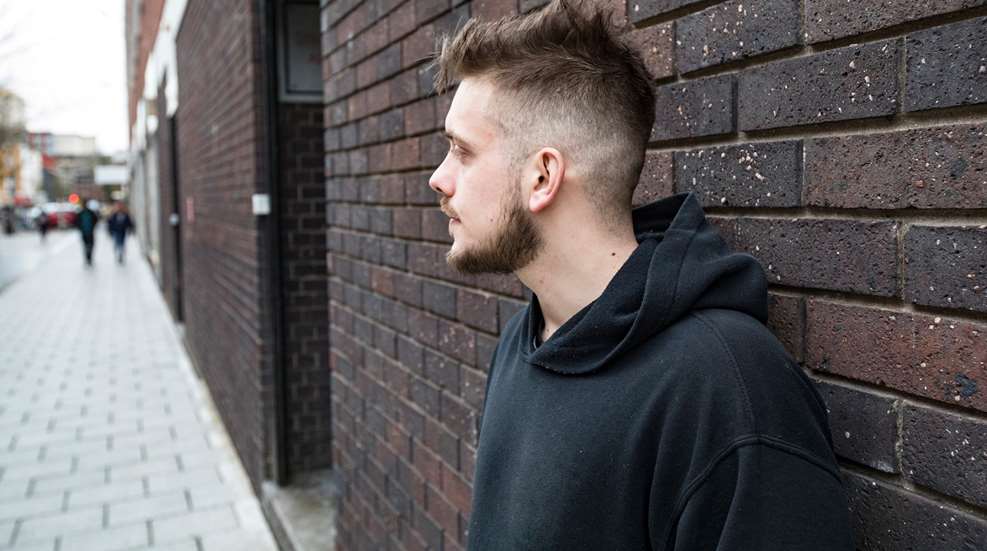
In order to commit an assault, a mugging, a rape or any other type of up-close crime, a bad guy has to put himself in a physical position that allows him to pull off his deed successfully. If you can recognize when he’s maneuvering into that position, you have a better chance of stopping an attack before it starts.
The first thing is to be aware of when you’re in a transition zone or fringe area. You can read all about those in another article, but the gist is that a criminal needs a sparsely populated location where people tend to pass through (not linger), usually with something on their mind and an intended destination. Stairwells, alleys, parking lots, isolated restrooms, ATN vestibules and other similar places are all examples of transition zones where conditions are ideal for criminal activity. Another fringe area that is particularly relevant to women, and one you might not have considered, are empty rooms in a house where a party is going on. (Think upstairs bedrooms during a rager full of inebriated college kids).
Note that these places are not dangerous in and of themselves—just that you should pay extra attention to your surroundings when you are in one of them. When you are, watch for the following types of criminal positioning.
Closing the Gap: The first and most obvious sign of criminal positioning is physical distance. A bad guy needs to get close enough to grab you or at least close enough to threaten you with a weapon without anyone else seeing, and that means he needs to get way inside your normal bubble of personal space. You’re familiar with the socially acceptable norms of how close humans stand to one another in different places. “Close” on a packed elevator is much different than “close” in an empty parking lot. Some people are just socially clueless or close-talkers, but in general, pay close attention to anyone who seems to be trying to get closer to you than the situation warrants—closing physical distance is a major indicator of criminal positioning.
Lying in Wait: Ambush predators—jump-out-of-the-bushes types—need places to hide where you won’t see them until they’re close enough to attack. In this case, you won’t see the closing-the-gap move coming until it’s too late, but you can learn to watch for these places and give them a wider berth. Scan your surroundings for likely hiding spots, such as the entrances to alleyways, large windowless vans in parking lots, hidden corners, recessed areas behind a door you might have just exited, and more. Look behind you, and as you scan, ask “If I wanted to surprise someone around here, where would I hide?”
The Intercept Move: Another sign of criminal positioning is the intercept move. If you are walking down a sidewalk or in a parking lot and someone clearly changes their course so that they will bump into you soon, there’s a reason. It might be an innocent reason, like they just realized they almost missed their street, but it’s also possible the reason is more nefarious. Slow your pacing so you won’t end up at the same place at the same time and see how they respond. If they slow down to match your pace or change their course again, you’ve probably got trouble.
Blocking Escape Routes: Anyone who approaches you from a direction that doesn’t allow you an easy exit is suspect. Allowing yourself to be trapped against a wall, a locked door, a car or something else you can’t easily maneuver around puts you in a very vulnerable position, so be wary of anyone who is attempting to pin you down for any reason.
The Multi-Person Trap: Criminals often work in pairs or groups, and there are a number of positioning traps they can set. If two or more people split up as they approach you, pay attention. One might be circling around to approach from a different angle while the other distracts you, or they might be attempting to surround you. In fact, be on the lookout when anyone approaches you unsolicited in a fringe area, as distraction is a common ploy. If multiple people are standing such that you must walk between them or pass them in a line—like two people standing on either wall of an alley, or several people leaning against a wall in a line such that the first one can start following you after you pass him and the others can close in in front of you—be wary, and back out if the other context clues give you any reason for concern at all.
Context clues are important, because all of these positioning indicators can have innocent explanations. You’ll know or at least have a strong sense of how much trouble a particular positioning move is based on the time of day, the location, the behavioral cues of the individual(s) in question, and more. Getting pinned down by a Girl Scout trying to sell you cookies in the grocery store parking lot is an example of positioning at work but really nothing to fear. Being approached at a gas pump at night by a stranger with erratic behavior who attempts to get much too close to you is an entirely different positioning situation. You’ll know based on the context when positioning is a potential problem versus an innocent social faux pas or coincidence.















































